Groundhogs are famous for predicting the weather , but they’re really good at digging. These varmints are so destructive they can quickly ruin your garden or lawn. Learn how to get rid of groundhogs by understanding their behaviors and how to remove them from your property.

Groundhog Behavior: Why They’re So Hard to Get Rid Of
Groundhogs are known for tunneling and burrowing. They start digging as soon as they wake up from their winter hibernation, and they don’t stop until they go back to sleep in the fall. A better understanding of how to get rid of groundhogs also includes knowing about their reproduction cycle and food preferences. This makes eliminating them from your yard easier.
Burrowing habits
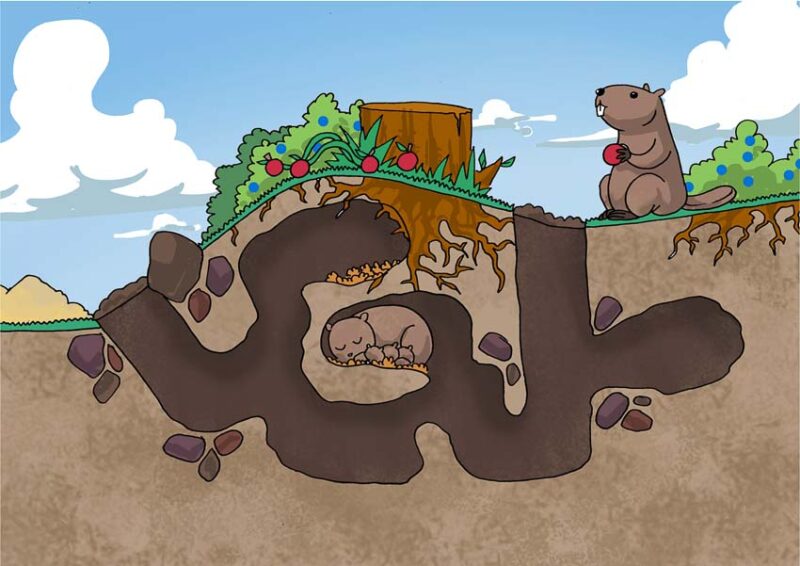
Groundhogs move a lot of dirt. Their dens are deep and wide; one groundhog can move up to 700 pounds of dirt digging just one den.
The den pipes go down about six feet, while the runs can extend up to 100 feet and go in several directions. Groundhog dens have one main entrance, with up to a dozen more exits they can use to escape from predators. To make matters worse, groundhogs often have more than one den.
Their winter den is separate and has only one entrance.
Adaptable nature
Groundhogs’ ability to adapt to different climates and environments has allowed them to thrive all over Europe, Asia, and North America. While they prefer grassy open areas, fields, and meadows, they are also commonly found in urban areas and forests, and they are highly adapted to human environments.
Reproduction and population growth
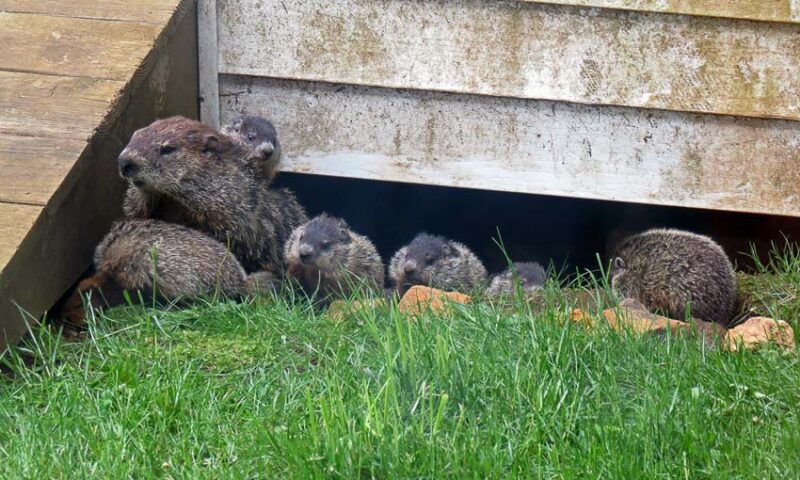
Groundhogs are susceptible to predators and have a short average lifespan of three to six years. In their second year, they reproduce. A 30-day gestation period is followed by the birth of two to five babies.
A member of the rodent family , groundhogs only produce one litter each year, but when the young are five to six weeks old, they start digging burrows, which is why their population seems to explode in the middle of summer. If you don’t take steps to remove them, within a few years you will have a serious groundhog infestation.
Food preferences
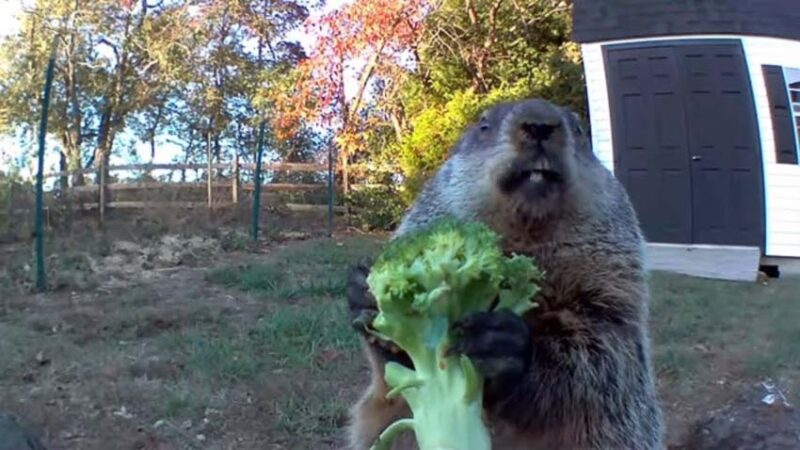
Groundhogs are vegetarians known for their hearty appetites. They consume up to 1.5 pounds of grass, plants, fruit, roots, and bark daily.
Unfortunately, they often frustrate farmers in the fall by taking small bites out of ripe produce, making it unmarketable.
The Damage Groundhogs Can Cause to Your Yard
Groundhogs cause extensive damage through destroyed lawns and gardens and structural damage to buildings. They also present a risk to machinery, pets, and humans.
Destroyed lawns and gardens
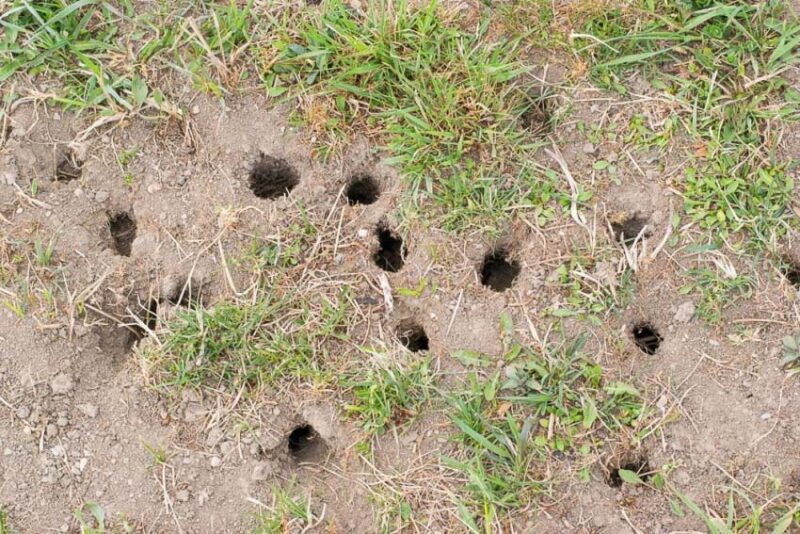
Groundhogs destroy lawns and gardens by eating roots and digging holes. When groundhogs eat grass, and plant and tree roots, it weakens them, and the holes they dig present other problems.
The ground becomes soft and loose, and it has large piles of dirt in some places. This causes the ground to become uneven, making mowing difficult, and thus ruining your lawn’s appearance.
Structural damage to buildings
Groundhogs often dig underneath sidewalks and the foundations of buildings. As a result, they can cause considerable structural damage when they move large amounts of dirt.
Groundhogs can also chew through wires and underground pipes.
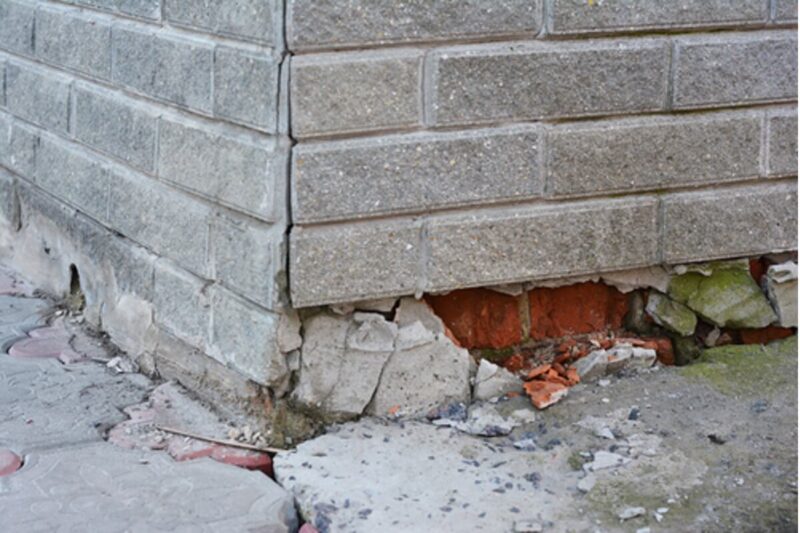
Damage to equipment
Groundhog dens undermine the integrity of the ground and can damage farm equipment. When farm equipment drives over deep burrows, it can fall in and cause axles to break or alignment pins to snap.
Mowing over the piles of dirt that groundhogs leave behind is also hard on mowers.
Risk to pets, livestock, and humans
Groundhogs don’t pose a significant disease risk to pets and animals, but they can carry rabies, so it’s important to treat bites as potential exposures. They can also carry ticks and fleas, which pass diseases to humans.
Groundhogs present a bigger danger to livestock, as it’s common for horses and cattle to break legs stepping in groundhog burrows.
How to get rid of grounds using five methods
Groundhogs are adaptable creatures that can tunnel underground, swim, and climb. Getting rid of groundhogs isn’t easy, but it can be done with these five methods.
Use as many of these methods as you can to get the best yard protection from groundhogs.
Method 1: Fencing and barriers
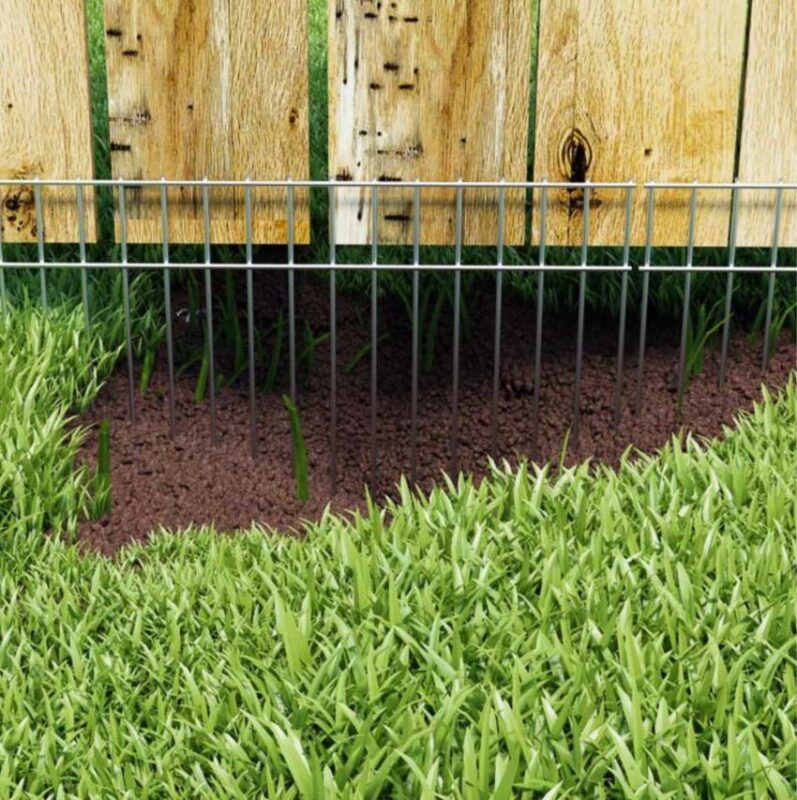
Using fencing and barriers to keep groundhogs out of your garden or other specific areas and get rid of them. In fact, it is one of the best ways to protect your yard. When fencing is placed at least two feet below ground level, it provides a barrier that deters them and forces them to turn around.
Groundhogs can fit through holes 3 to 4 inches wide, and they are also good climbers, so don’t expect fences to keep them away for good.
Instead, using fences in conjunction with other eradication methods provides the best results. Also, heavy gauge mesh is best since groundhogs can chew through wire.
Electric fencing is another way to deter groundhogs. Place one strand of electric fencing about 3-4” off the ground and a second strand about six inches above that. Keep tall grass mowed beneath the wire to keep it from shorting.
Method 2: Live trapping and relocation
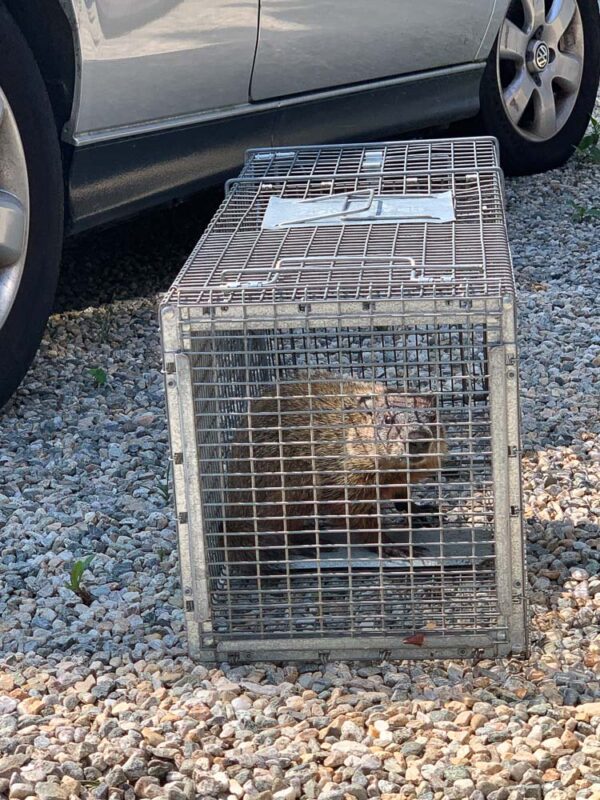
One of the most humane ways to get rid of groundhogs is relocation. Use a live trap at least 10” x 12” x 30”, and bait it with fresh fruits and vegetables.
Field tests show that cantaloupe is a favorite of groundhogs, but they also love alfalfa, broccoli, lettuce, and peas.
Groundhogs are active during the day, so set the traps on the ground in a secluded shady area. Once you’ve trapped a groundhog, cover the trap with an old blanket to calm it and relocate it as quickly as possible. You should take it at least five miles away and leave it in an area with good cover.
Method 3: Repellents and deterrents
Even though groundhogs seem to like anything organic, they are quite picky about some plants and odors. Large plantings of herbs like lavender, basil, thyme, rosemary, and oregano will deter groundhogs.
Knowing how to get rid of groundhogs also depends on knowing about chemical repellents when someone makes them specifically to repel groundhogs. They work best when you apply them frequently. General repellents often don’t work on groundhogs and can waste money.
Homemade groundhog repellents are also effective when you apply them frequently. These deterrents work because of their odors, and you must reapply them after rain or every few days.
Here is a list of common repellents that you can sprinkle wherever you see signs of groundhogs:
- Human hair– You can get human hair from the barber and scatter it around the yard or place it in a mesh bag to keep it from blowing away. Stake the bag near the main entrance.
- Soiled kitty litter– Soiled kitty litter sprinkled over the entire area where you see groundhog activity is one of the best deterrents.
- Epsom salts– Place a small dish of Epsom salts where groundhogs are eating your plants.
- Castor oil– For best results, apply while the groundhog is outside its burrow.
- Cayenne pepper– Buy ground cayenne pepper in bulk and place small piles near the entrances and exits to the den.
- Garlic– Crush garlic cloves and place them near the entrances and exits.
- Ammonia– Spray copious amounts of ammonia in areas where groundhogs are active, or soak rags in ammonia and place them near the groundhog burrows.
- Talcum powder– Groundhogs hate the smell of talcum powder, and you can deter them by sprinkling it near their burrows.
- Predator urine– Predators will scare groundhogs away, so use predator urine from bobcats, coyotes, and red foxes.
- Blood meal– Groundhogs dislike the smell of dried blood meal. It’s also one of the richest natural sources of nitrogen, so it has the added benefit of acting as a fertilizer.
- Scarecrows– Place a scarecrow in problem areas and move it frequently. Use scarecrows in conjunction with other repellents, like human hair and kitty litter.
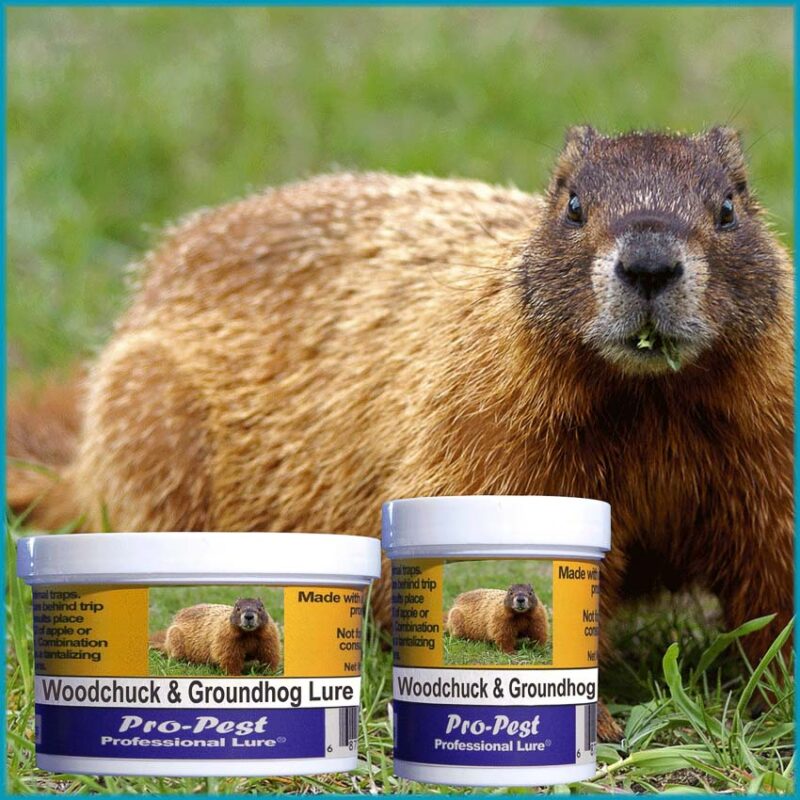
Using several of these groundhog deterrents from April to October, when groundhogs are active, can keep them from making their homes in your yard. Once they leave, continue to use these groundhog repellents to prevent them from returning.
Method 4: Habitat modification
Groundhog habitat modification is accomplished by adding things that groundhogs don’t like and removing what they do. The ideal groundhog habitat has soft soil, plenty of food, water access, and dense protection cover.
However, to encourage groundhogs in your yard to move elsewhere, you can modify the habitat so that it’s no longer ideal.
In addition to using repellents and deterrents, remove brush and wood piles so groundhogs can’t find cover. Mow areas with thick vegetation that’s adjacent to your yard.
Groundhogs also like to hide under porches, decks, and old sheds, so attach hardware cloth to the bottom of these structures. This will prevent access and help you avoid groundhog damage to buildings.
Method 5: Professional groundhog removal services
Wildlife pest control specialists can help you make a plan to remove groundhogs from your property and take groundhog prevention measures. Professional removal services use many different groundhog control methods to eliminate them from your yard.
Groundhog trapping isn’t for the faint of heart, so it’s a good idea to contact a professional if you aren’t comfortable doing it. In addition, groundhog trapping and relocating in some areas is illegal and must be done by a professional.
FAQ: Common Questions About How to Get Rid of Groundhogs
Are groundhogs dangerous to humans or pets?
Groundhogs aren’t usually dangerous to humans or pets. They are shy, timid animals that normally run away when they are threatened.
However, like all wild animals, they can carry fleas, ticks, and rabies, and they will bite if they are cornered.
How can I prevent groundhogs from returning to my yard?
If you manage to eliminate groundhogs, they will return to your yard if it provides everything they like. Keep using repellents and groundhog fencing to deter them.
Since groundhogs like dense vegetation for cover, keep your yard mowed and remove food sources whenever possible.
What plants are groundhog-resistant?
Many plants are resistant to groundhogs, and some plants will act as deterrents to keep them away. Lavender and other pungent herbs are groundhog-proof plants. You can plant them in flower beds to repel them.
Groundhogs are less likely to consume other flowers, such as snapdragons, wax begonias, annual poppies, pinks, and ageratum.
The best groundhog-proof plants for the garden are beets, onions, potatoes, and fennel. If you’re trying to plant trees in an area with groundhogs, consider evergreens like blue spruce, pines, and juniper or deciduous trees such as sumac, Japanese maple, and gray birch.
Are there any legal considerations when dealing with groundhogs?
To determine legal considerations when dealing with groundhogs, you should consult the wildlife department in your state. In many parts of the United States, groundhogs can be trapped and relocated with the landowner’s permission, but groundhog relocation is illegal in some areas.
Groundhog hunting season is also open most of the year in many states, but using firearms in your neighborhood might not be safe or legal.
What are the most humane ways to remove groundhogs?
The most humane method is to encourage them to leave by modifying their habitat. Groundhog habitat modification includes removing everything they like and using repellents to scare them away.
If this doesn’t work, relocation is another humane groundhog removal method. Trap and relocate them in a meadow with dense vegetation, where they can find food, water, and safety from predators, at least five miles from your home.



